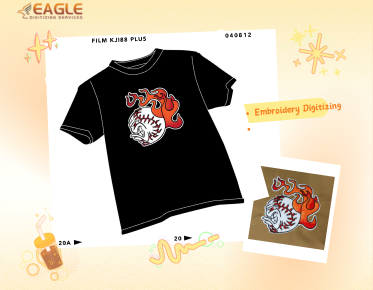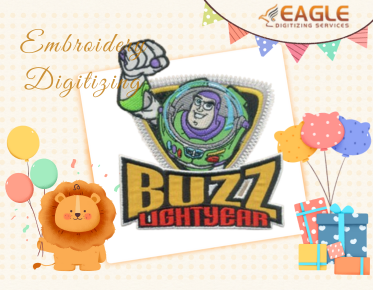Replace Fonts during Raster to Vector Conversion: Here’s How
In the world of graphic design,
converting raster images to vector format is a common yet intricate process.
While transforming a pixel-based image into scalable vector art, one often
encounters a major hiccup: the fonts. Text elements can lose their clarity or
even get entirely distorted during this transition. To retain the original
aesthetics and ensure a polished final product, replacing fonts during
raster-to-vector conversion becomes crucial.
Let’s dive into why this process matters and how to tackle it effectively.
Understanding Raster to
Vector Conversion
Raster to vector conversion involves
transforming a bitmap image—composed of pixels—into a vector image, which is
built from mathematical paths. Raster images, like JPEGs and PNGs, are
resolution-dependent and tend to lose quality when scaled. Vectors, on the
other hand, maintain their crispness at any size because they rely on geometric
formulas. This makes vector formats ideal for logos, illustrations, and any
design that requires scalability.
Why Font Replacement
Matters in Raster to Vector Conversion
During the conversion, text elements
often get distorted because the software interprets them as shapes rather than
editable text. This misinterpretation can result in blurry edges, broken
characters, or even missing elements. Replacing fonts ensures that your text
remains sharp, readable, and true to the original design intent. It’s a key
step in preserving the integrity of your graphic.
Challenges of Converting
Text from Raster to Vector
One of the biggest challenges in this
process is that raster images treat text as part of the image itself, not as
separate, editable text. This means the software converting it cannot
distinguish between text and other visual elements. Additionally, different
fonts have unique characteristics—like stroke width and kerning—that can be
lost during the conversion, leading to discrepancies in the final vector
output.
What Happens to Fonts
During the Conversion Process?
When you convert a raster image with text
into a vector format, the software often converts the text into paths or
outlines. This changes the text from editable text fields into fixed shapes,
making it impossible to change the font style or size without significant
manual adjustments. The result can be less than perfect, especially for
intricate or decorative fonts.
Why Some Fonts Don’t
Convert Properly
Certain fonts, especially those with fine
details or complex curves, do not translate well in the raster-to-vector
process. Script fonts, for example, often suffer because their elegant, flowing
lines can become jagged or uneven. Additionally, fonts with very thin strokes
may appear broken or incomplete in the vector format.
Recognizing Issues with
Text Elements in Raster Images
Blurriness, pixelation, and irregular
spacing are common issues with text elements in raster images. Before starting
the conversion, examine the raster image closely. If the text appears blurry or
pixelated, these imperfections will likely be carried over into the vector
version, making it crucial to address font replacement early on.
How to Prepare Your Text
for Smooth Conversion
To avoid potential issues, it’s wise to
prepare your text before initiating the conversion. Using high-resolution
raster images reduces the risk of pixelation. Also, ensure that the text is as
clear as possible, with strong contrast against the background. This will help
the conversion software better distinguish the text.
Tips for Prepping Your
Design Before Conversion
Consider converting the text to outlines
in your raster design software. This will make the text part of the vector
shapes and preserve its appearance. Additionally, avoid using decorative or
intricate fonts that may not convert well. Stick to clean, simple fonts for
better accuracy.
Choosing the Right Fonts:
Factors to Consider
When choosing fonts for a design you
intend to convert, consider readability, simplicity, and scalability. Fonts
with thicker strokes and less intricate details typically fare better during
conversion. Avoid highly stylized fonts that may lose their distinct features
when vectorized.
The Role of Font Types:
Serif vs. Sans-Serif in Conversion
Serif fonts, with their decorative
strokes, can be challenging to vectorize, especially in small sizes. The thin
serifs may not be rendered accurately, resulting in a loss of detail.
Sans-serif fonts, with their simple, clean lines, usually convert more
smoothly, making them a safer choice for designs requiring vectorization.
Identifying
Hard-to-Convert Fonts: What to Look For
Look out for fonts with thin strokes,
complex curves, or intricate decorations. These features make it harder for
conversion software to process accurately. Fonts with unusual letter spacing or
connected characters (like script fonts) can also present challenges.
How to Use Font Outlines
for Better Conversion Accuracy
Converting text to outlines transforms
the characters into vector shapes, preserving the exact look of the text. This
method prevents the software from trying to interpret the font and risking
inaccuracies. However, once outlined, the text is no longer editable, so make
sure you’re satisfied with the content before converting.
Understanding Outlining
Text: Pros and Cons
Outlining text ensures that your design
retains its appearance regardless of the fonts installed on different
computers. However, outlined text cannot be edited later than regular text,
which can be a drawback if you need to make changes post-conversion.
Steps to Outline Text in
Popular Software (Photoshop, Illustrator)
In Adobe Illustrator, select your text,
right-click, and choose “Create Outlines.” In Photoshop, right-click the text
layer and select “Convert to Shape.” This process turns the text into vector
shapes, preserving their appearance during conversion.
Manually Replacing Fonts
in Vector Design Software
After conversion, manually replacing
fonts may be necessary if the automatic process fails. Open the vector file in
software like Adobe Illustrator, identify the problematic text elements, and
replace them with the appropriate fonts manually.
When Automatic Font
Replacement Fails: The Manual Approach
Automatic font replacement tools can
misinterpret complex fonts, substituting them with incorrect options. Manually
choosing the closest match ensures consistency and accuracy in your final
design.
How to Match Fonts in
Your Vector Software
Matching fonts requires a keen eye. Look
for similar stroke weights, letter spacing, and overall style. If you’re unsure,
try online tools like WhatTheFont to help identify the closest match.
Using Font Identification
Tools for Accurate Font Matching
Font identification tools analyze the
shapes and characteristics of your text to suggest matching fonts. Upload a
screenshot of the text, and the tool will provide a list of potential matches.
How to Access and Use
Online Font Identification Tools
Tools like WhatTheFont or FontSquirrel’s
Matcherator can be accessed directly through their websites. Simply upload an
image of the text, and follow the prompts to get matching font suggestions.
Best Practices for
Matching Fonts Post-Conversion
Consistency is key. If the exact font is
unavailable, choose a replacement that closely resembles the original in style
and weight. Avoid mixing too many different fonts in one design to maintain a
cohesive look.



